Decades ago, when I first moved to Florida, I decried the fact that I was moving to a state with so little history.
How foolish of me!
If you define history as the story of what English-speaking Europeans did in the Americas, you might decide Florida’s history was short. But of course, that’s not Florida’s real story.
Fortunately, I’ve come to discover the many historic places in Florida that tell a richer, more complicated story. If you visit historic places in Florida, you will find fascinating characters, beautiful buildings and landscapes and, I am certain, a surprise or two.
I’ve collected an assortment of the best historic sites in Florida, all of which can anchor a great getaway. Because this is history, we’ll start at the beginning.

Castillo de San Marcos, St. Augustine: The oldest building in Florida
The thing that makes Florida history different is that Florida was claimed by the Spanish so early in the history of the New World. Your American history class probably didn’t dwell on this; the Pilgrims, arriving some 50 years later, get all the love.
But when you go to St. Augustine and see this massive and magnificent coquina fort, you realize this place was a very big deal. It was built between 1672 and 1695 and, get this, St. Augustine had been a community for 107 years at that point.
The fort is impressive and beautiful, with a stunning view. Everybody should tour it at least once. While you’re there, don’t miss the rest of Old Town, with many buildings from the 1700s, and be sure to drive 14 scenic miles south to a smaller Spanish fort that you reach by boat, Matanzas National Monument, completed in 1742.
Castillo de San Marcos from Florida Rambler
Matanzas National Monument from Florida Rambler.
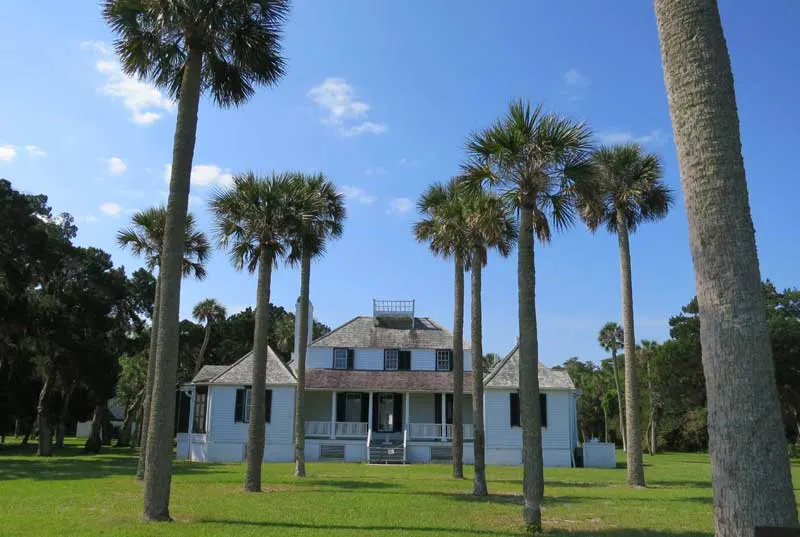
Kingsley Plantation, Jacksonville: A slavery story unique to Florida
Near St. Augustine and also really old (1798), the Kingsley Plantation struck me with its remarkable story. It’s operated by the National Park Service as part of a little known national park called the Timucuan Ecological and Historical Preserve.
What’s special about the Kingsley Plantation? The story of the family that lived there. Zephaniah Kingsley and his wife Anna Madgigine Jai lived on the plantation from 1814 to 1837. Kingsley was a slave trader. He’d bought Anna in Cuba as a 13 year old and by the time she was 18 they were married and had three children. Zephaniah freed her and their children from slavery in 1811.
After Spain’s rule over Florida ended, things changed for Black people. Anna, two sons and 50 freed formerly enslaved people fled to Haiti in 1832 as Florida became a place where there was no longer such thing as a “former” slave. The story has some fascinating twists.
The site of the plantation is beautiful and unspoiled and there is much more to be learned there than this brief summary – and that’s why it’s so great.
Florida Rambler on the Kingsley Plantation
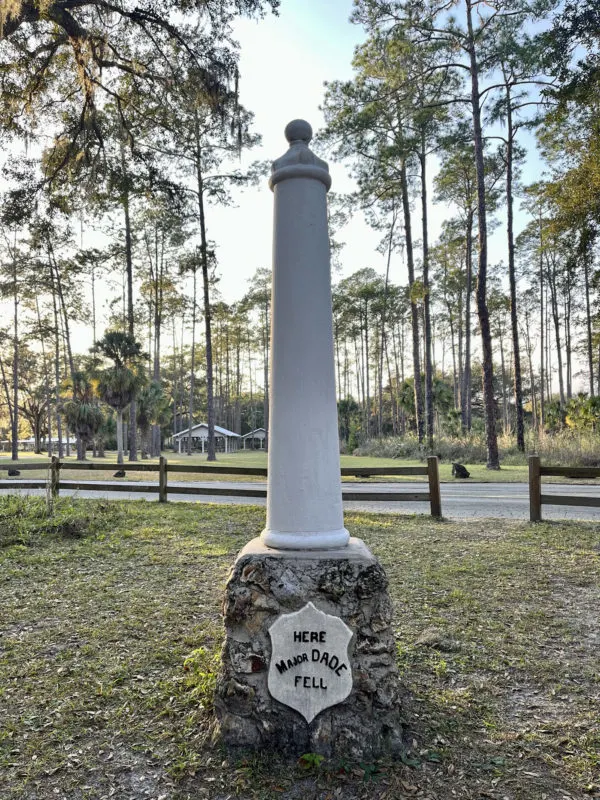
Dade Battlefield: The Indian wars in Florida
Dade Battlefield Historic State Park is the place that the fellow after whom Miami-Dade County is named died a hero. Now a state park just off I-75 north of Tampa, it tells a complex story. It also is a beautiful spot for a picnic or leg-stretcher on a road trip.
At this site, Maj. Francis L. Dade and all but three of his 106 men were killed in an ambush by Seminole Indians in 1835.
That makes him a hero, right? Well, today, it’s not so simple, and the visitor center here provides background that makes you think. For example, the Seminoles had welcomed former slaves as brothers, much to the chagrin of white Floridians trying to force them from their land. Whose side is in the right?
The site is worth a visit and if you’re a history buff, check the calendar for special events. (For example. In late December, the battle is re-enacted with cannon, muskets and costumed re-enactors.) Details are in this Florida Rambler story on Dade Battlefield.
Another great site from the Seminole Wars is Cape Florida Lighthouse, the oldest building in Miami Dade County, which was dramatically attacked by Seminoles in 1836. It’s in beautiful Bill Baggs Cape Florida State Park in Key Biscayne and you can tour the lighthouse, which has a spectacular view as well as a great story.
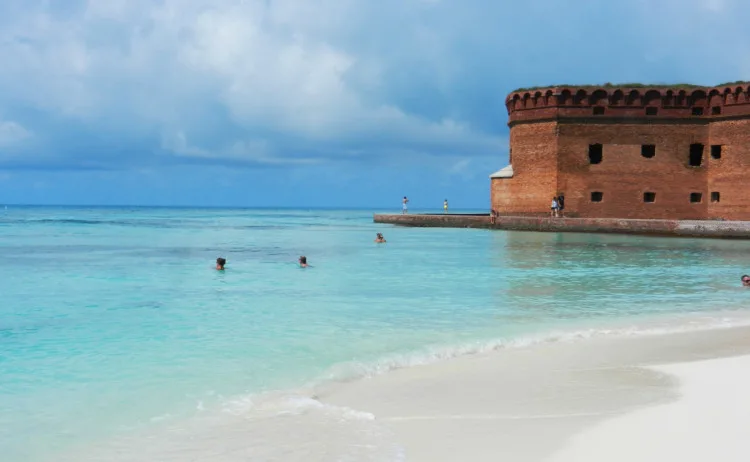
Fort Jefferson in the Dry Tortugas: Florida in the Civil War
Florida Civil War-era forts could have comprised half this list, but I picked Fort Jefferson because it is perhaps the most beautiful place I have visited in Florida.
Located on an island 70 miles from Key West, Dry Tortugas National Park takes some time, money and effort to visit, but, wow, does it pay off.
Fort Jefferson was built with 16 million imported bricks from 1846 to 1876 and was used primarily as a prison during the Civil War, when its most famous resident was Dr. Samuel Mudd, who was convicted of conspiracy in the assassination of President Abraham Lincoln.
Today the fort is huge, falling apart and has one of the world’s best collections of Civil War cannons. And that’s just the start of what makes it fascinating.
Here’s a Florida Rambler story about getting to and camping on the Dry Tortugas.
If you can’t get to the Dry Tortugas, consider the other wonderful Civil War-era forts in Florida.
Fort Clinch State Park has broad beaches, trails for hiking and biking, and camping, but it is also one of the best preserved forts thanks to work in the 1930s by the Civilian Conservation Corps. It was built in 1847, after the end of the Second Seminole War, and had a Union garrison during the Civil War.
It has an unusually active corps of volunteers who serve as Civil War reenactors. They delight visitors as they stay in character and talk about life in the fort. Fort Clinch State Park.
Fort Zachary Taylor is a hidden gem in Key West, with the most Civil War cannons of anywhere in the US.
Anybody who likes forts has to see Fort Pickens in Pensacola, massive, with state-of-the-art engineering (for then.)
Lastly, Civil War buffs will want to visit the Olustee Historic Battlefield State Park, site of the largest Civil War battle in Florida and now one of the largest Civil War re-enactments in the southeast. Florida Rambler on Olustee Battle re-enactment.
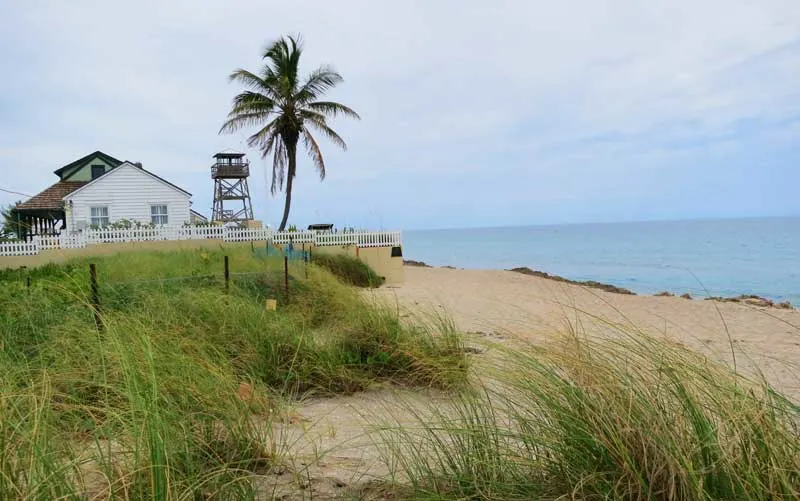
House of Refuge: Florida as shipwreck capital of the Atlantic Coast
For a big part of its history, Florida’s peninsula was a vast wild area and its coastal reefs a severe hazard to navigation as hurricanes came out of nowhere and blasted ships off course. A great landmark of this era is Gilbert’s Bar House of Refuge in Stuart.
This is the last house of refuge of 10 originally built along Florida’s coast to aid shipwreck victims. The system of houses of refuge was unique to Florida and developed between 1876 and 1886. The 10 houses were evenly spaced from Key Biscayne to what is now Daytona Beach, each manned by a single keeper and his family. In between, signs on the beach pointed to them.
Somehow, despite its prime beach-front location, this one survived. It’s full of history, starting with the Ais tribe of Native Americans who left charred fish bones, pottery and shells in a midden located here.
It is also a spectacular site, located on a picturesque section of beach called the St. Lucie Rocks, an outcropping of Anastasia limestone. The 1876 cottage is surrounded by an award-winning garden of native plants and flowers with great views of both the ocean and the Indian River Lagoon.
Florida Rambler on Gilbert’s Bar House of Refuge.
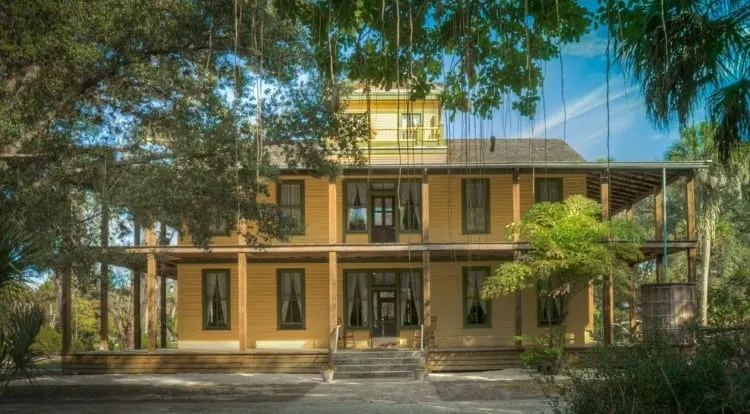
Koreshan State Historic Park: Cult headquarters as the start of wacky Florida
I love Koreshan because it seems so perfect that these very early settlers to South Florida (1894) were following an eccentric cult leader.
Dr. Cyrus R. Teed believed we lived inside a bubble, that “the entire universe existed within a giant, hollow sphere.” The utopian community eventually attracted 200 followers who operated a bakery, sawmill, printing facility, even a restaurant and hotel on the main road, U.S. 41.
Koreshan was well-preserved over the years even though Teed died in 1908. (The story goes that followers propped up his body and waited days for him to resurrect himself until the county health department made them bury him.)
Without Teed, the group did not thrive. Amazingly, though, there were still four members living there in 1961, and it was this elderly contingent that generously gave the 305 acres to become Koreshan State Park.
The park is home to 11 immaculately restored and nationally registered historic buildings, plus it is a beautiful place to kayak, hike and camp.
Florida Rambler on Koreshan State Historic Park
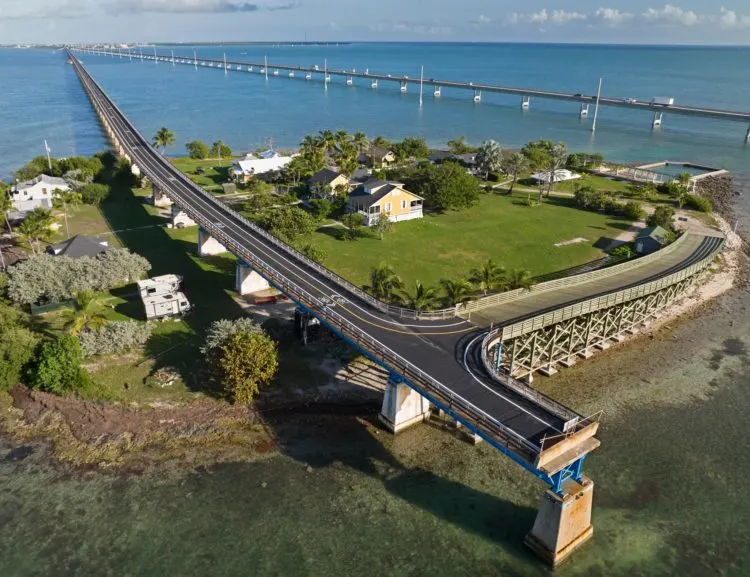
Pigeon Key & Seven Mile Bridge: Flagler changes Florida forever
Henry Flagler is the most influential figure in Florida history, and I could have listed a half dozen sites related to him – from St. Augustine to Key West. But the best Flagler historic site is Pigeon Key, a five-acre island two miles south of Marathon in the middle of Flagler’s old Seven Mile Bridge.
Henry Flagler built the first railroad down Florida’s Atlantic Coast, opening up a remote region to tourism and development.
A partner of John D. Rockefeller, Flagler decided to invest vast dollars in continuing his railroad all the way to Key West. Some called it Flagler’s Folly.
Pigeon Key is where workers lived while building an engineering marvel, a bridge over water that stretched for seven miles.
On Pigeon Key, the history is well told through displays and artifacts. The story includes the deadly 1935 Labor Day hurricane that killed some 400 and destroyed the railroad line. The state and county government bought what remained and the railroad bridge foundation was used to build a bridge for vehicles — the one you used if you drove to Key West before the new Seven Mile Bridge was completed in 1982.
Tours start with tram ride decorated to look like a train and leave from the new Pigeon Key Visitor’s Center and Train Depot location, 1090 Overseas Highway.
The island itself is like the visiting the Keys from a hundred years ago, with historic wood buildings, turquoise water every way you look and even a dock where you are free to snorkel.
The remaining section of the Old Seven Mile Bridge re-opened in January 2022, and is now a splendid places, to walk, jog or ride a bike. The old rusting rails that were turns into guardrails are still there too.
Florida Rambler on Pigeon Key and the Old Seven Mile Bridge.
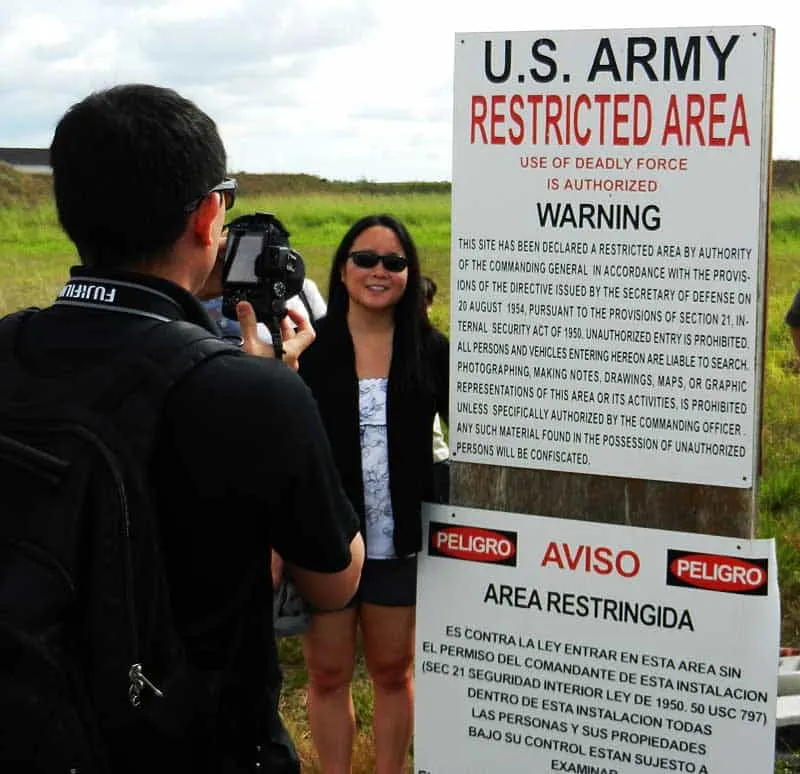
Nike Missile Base in Everglades National Park: Florida and the Cuban Missile Crisis
Deep inside Everglades National Park is a historic site that is frozen in the era of the Cold War.
This Nike base was built in response to the 1962 Cuban Missile Crisis – the closest the US ever came to a nuclear conflict with the Soviet Union. It remained in operation until 1979 and today it is listed on the U.S. Register of Historic Places. The Everglades base was one of four Nike bases in South Florida, each with 18 Hercules missiles ready to intercept a Soviet attack from Cuba.
Once the Nike base was abandoned, it changed little. Thus the buildings have the original murals painted by soldiers and you can see the scary warning signs (“U.S. Army Restricted Area. Use of Deadly Force Is Authorized.”)
In winter, you can tour the base and the park rangers, many of them veterans, bring the story alive with their tours.
Florida Rambler on the Nike base in Everglades National Park
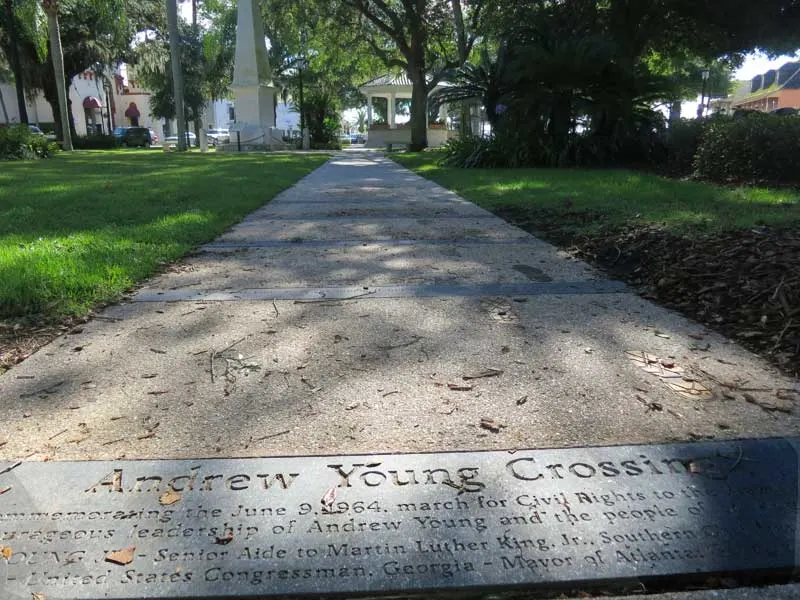
St. Augustine: Florida and the Civil Rights movement
When I think of the Civil Right Movement, places like Birmingham and Selma come to mind. Until I visited, I didn’t realize St. Augustine belongs in that list.
Terrible things happened in St. Augustine.
Civil Rights leader Andrew Young led a peaceful march on June 9, 1964, and was brutally bludgeoned by a white mob.
A week later, black and white protesters jumped into a whites-only pool at the Monson Motor Lodge and the manager poured acid in the water to drive them away.
Martin Luther King was arrested on the steps of the Monson Motor Lodge and held in the St. Augustine jail.
Civil Rights leaders, however, say those often horrifying events directly led to the passage within weeks of the landmark Civil Rights Act in July 1964.
Today, to the surprise of some, you hear about these events in St. Augustine history from the cheerful guides on the ever-present tourist trolley tours. You also see monuments and markers at several sites.
There’s more in this story on St. Augustine history on how to see key sites from the Civil Rights movement in St. Augustine.
You’ll learn more about the Civil Rights movement in St. Augustine and other interesting aspects of Black history at the Lincolnville Museum and Cultural Center, which visitors have called a gem.
Also see this guide to fascinating historic places in Florida in Black history, a guide to six fascinating sites from Florida Rambler.
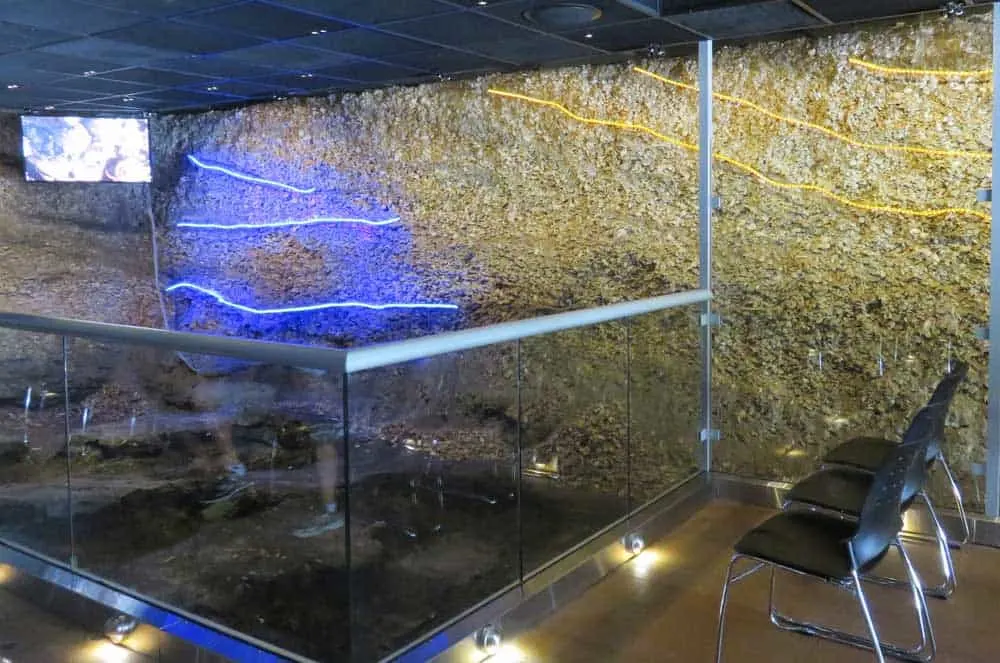
Mound House, Fort Myers Beach: A historic place in Florida from way back
The indigenous people of Florida were not Seminole Indians, who arrived much later, after most of the original residents had died or dispersed. Florida had several different tribes, and some left more evidence of their lives than others. One of the most fascinating was the Calusa and a great place to learn about them is the Mound House in Fort Myers Beach.
The oldest house in Fort Myers Beach (1906) became a museum in 2015. What’s really old, however, is the mound of shells, bones and pottery shards left by the Calusa Indians on which Mound House was built.
There are a lot of shell mounds around, but what is special about Mound House is your ability to actually go inside a shell midden. Here you see the various layers of shells left over the years and the archaeologists’ work is explained with a well-made video. The museum also has several exhibits about the life and culture of the Calusa Indians. Note: The underground shell midden has not reopened due to damage from Hurricane Ian.
To learn more about the Calusa Indians, go to an excellent facility on Pine Island, the Calusa Heritage Trail at the Randell Research Center, 13810 Waterfront Dr., Bokeelia, 239-283-2157. Spanish Point near Sarasota also has a cool walk-in shell midden.
Note: Mound House and Randell Research Center are still recovering from Hurricane Ian. Both have reopened, but not all areas are accessible yet as they rebuild.
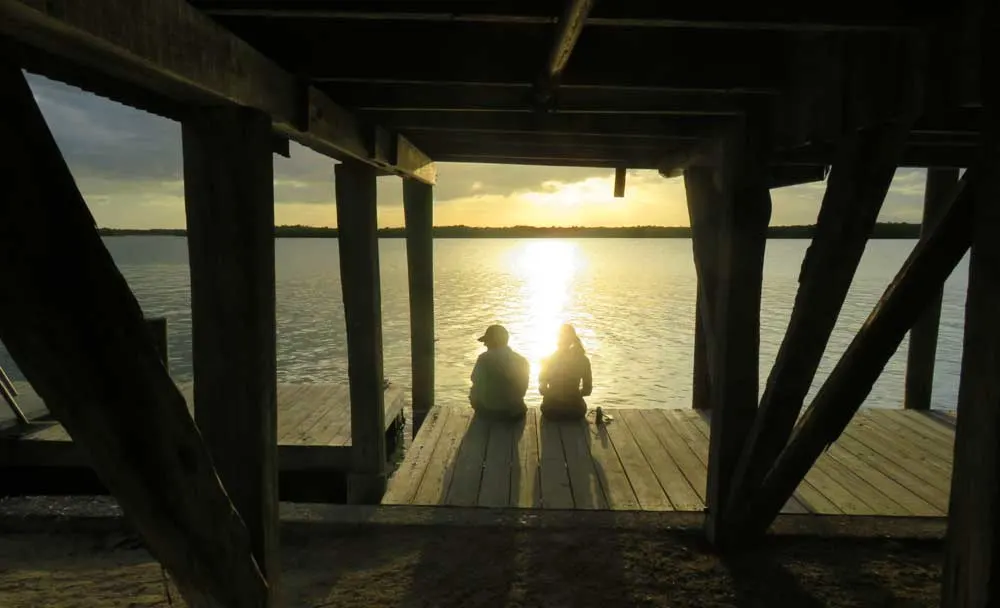
My favorite historic places in Florida that didn’t make the list
In picking these 10 sites, I had to skip many historic places in Florida that I love. Briefly, here are a few others you might consider:
- Chinsegut Hill Historic Site in Brooksville is a rare Antebellum plantation in Florida. Beautifully preserved atop a high hill, it introduces you to remarkable people, black and white, who lived here over 180 years. Several years after choosing this list, I discovered Chinsegut Hill; I may have to revise this list and add it to the top ten.
- Gamble Plantation Historic State Park in Ellenton has white columns to rival Tara and was the site of a dramatic Civil War event.
- Ybor City, the historic neighborhood in Tampa where in the late 1800s, Cuban cigar makers lived and worked.
- Smallwood store in Chokoloskee, an Everglades outpost opened in 1906 and still operated by the same family.
- Cap’s Place, a restaurant in Broward County on the National Register of Historic Places, is a remnant of the rum-running days of bootleggers. It was visited during World War II by the likes of Winston Churchill.
- Whitehall, the mansion Henry Flagler built for himself in Palm Beach in 1900-1901.
- The Key West Cemetery, where you learn many fascinating stories of the island’s history
- Weeki Wachee Springs State Park, an example of the roadside attractions that attracted visitors in the early 20th Century and where mermaids still put on shows in the historic Mermaid Theater. The park is listed on the National Register of Historic Places.
- Stiltsville, six iconic houses built on stilts in Biscayne Bay off Miami, now part of Biscayne National Park.
Here’s a list of 1,800 properties on the National Register of Historic Places in Florida, listed by county.
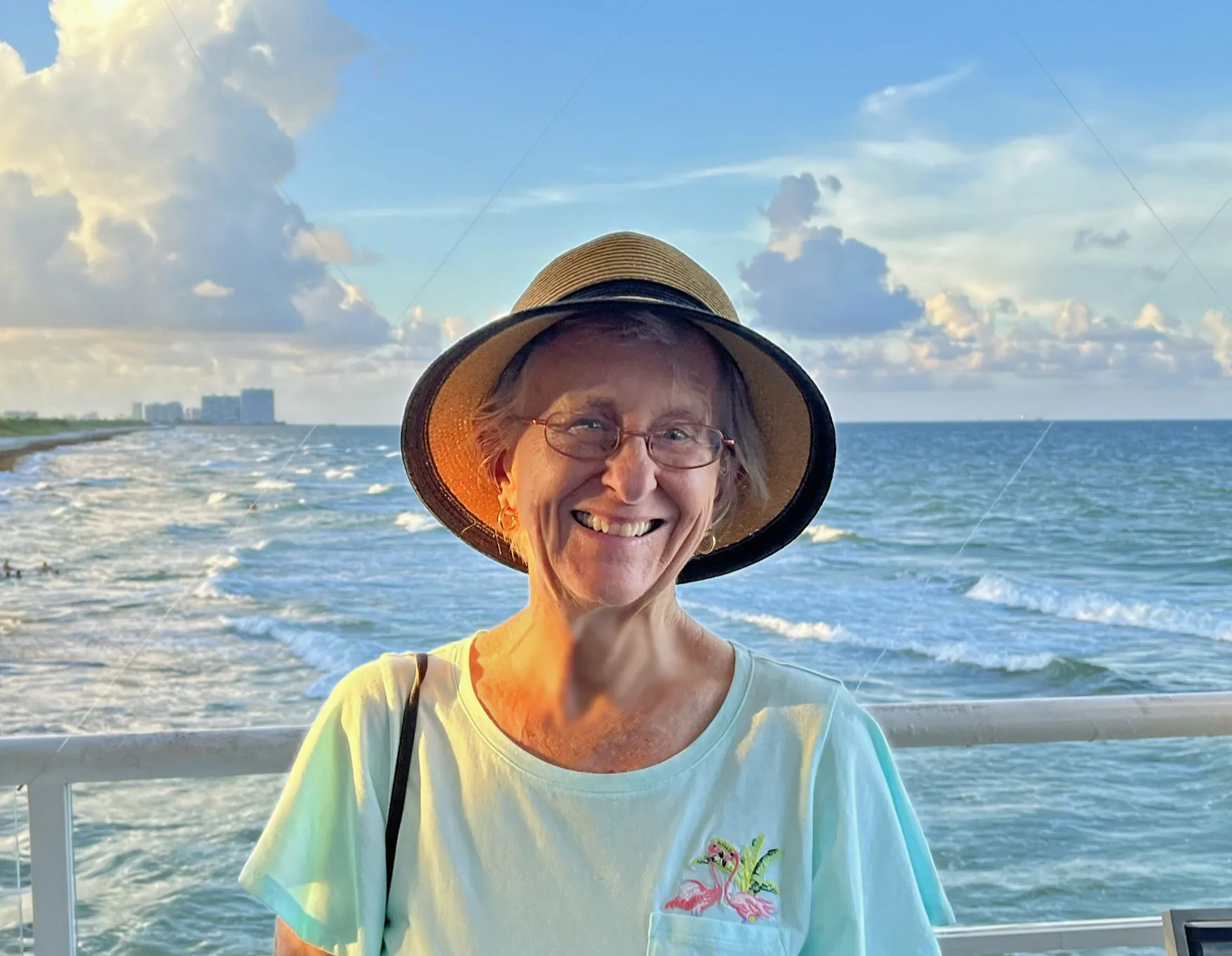
The author, Bonnie Gross, travels with her husband David Blasco, discovering off-the-beaten path places to hike, kayak, bike, swim and explore. Florida Rambler was founded in 2010 by Bonnie and fellow journalist Bob Rountree, two long-time Florida residents who have spent decades exploring the Florida outdoors. Their articles have been published in the Sun Sentinel, the Miami Herald, the Orlando Sentinel, The Guardian and Visit Florida.

terri
Wednesday 14th of December 2022
I wonder if you've ever visited the Marjorie Kinnan Rawlings House. What a great piece of history. I had to go there after watching the movie "Cross Creek." It's a step back in time. We were fascinated.
Bonnie Gross
Wednesday 14th of December 2022
I agree: It's a wonderful place, isn't it? I wrote about it here: https://www.floridarambler.com/northeast-florida-getaways/marjorie-kinnan-rawlings-historic-state-park/
Linda Evans
Saturday 7th of August 2021
Your visit to St. Augustine should have included the Lincolnville Historical and Cultural Museum, with its focus on African American history in St. Augustine. This place is a treasure with information about the accomplishments of African Americans throughout the long history of St. Augustine, as well as the traumas of slavery, Jim Crow era and civil rights era. I was sad to see that it was not included in your story. Lincolnville itself was inhabited mostly by African Americans until it’s gentrification.
Elias
Wednesday 2nd of March 2022
@Bonnie Gross, your right it was big help
Bonnie Gross
Sunday 8th of August 2021
Linda, Thanks so much for your comment. Sounds like this is a useful addition to the section on St. Augustine. I just added a link. Bonnie